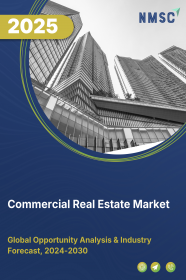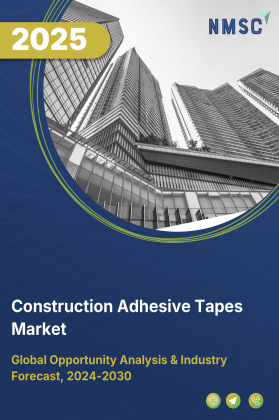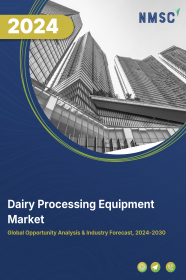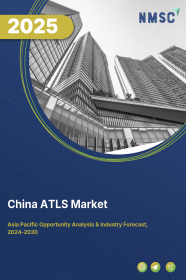
Commercial Real Estate Market by Property Type (Office Spaces, Retail Spaces, Industrial Logistics, Hospitality, data Centers and Others), by Property Size (Small (<500 sq. ft.), Medium (500-2000 sq. ft.), and Large (2000+ sq. ft.)), By Transaction type (sales, rental, lease), and by Price (Affordable, Mid End, High End, Luxury and Ultra Luxury)–Global Opportunity Analysis and Industry Forecast 2025-2030
Commercial Real Estate Industry Overview
The global Commercial Real Estate Market size was valued at USD 6.45 trillion in 2024, and is expected to be valued at USD 7.07 trillion by the end of 2025. The industry is predicted to reach USD 8.56 trillion by 2030 with a CAGR of 4.8% from 2025-2030.
The market is experiencing significant evolution, driven by factors such as economic expansion and urbanization fuelling market growth, demand shifts in property types driving the growth of the market, and government initiatives and investments further boosting the market. These drivers collectively contribute to the market's overall growth potential and expanding industry size by supporting the demand for diverse commercial properties, adapting to changing market preferences, and enhancing infrastructure development.
However, the market faces restraints, including economic headwinds and financing constraints hindering the growth of the market, which can limit investment and development activities, particularly in economically sensitive regions. Despite this challenge, various opportunities for industry players lie in the growing need for affordable housing creating significant opportunity for market growth, which offers fertile ground for expansion and creates future growth opportunities due to persistent housing demand and innovative development approaches. This shift has the potential to significantly broaden market reach, foster innovation, and expand the overall market size.
Economic Expansion and Urbanization Fuels Commercial Real Estate Market Growth
The fundamental drivers of economic progress and rapid urbanization play a crucial role in the growth and expansion of the commercial real estate market. As economies grow, businesses expand, leading to an increased need for various commercial spaces, including office buildings, retail outlets, and industrial facilities. Concurrently, the trend of urbanization concentrates populations in cities, further amplifying the demand for commercial properties to support the growing urban fabric. According to the World Bank Group reports in 2023, 56% of the global population, around 4.4 billion people, are already living in urban areas. The 2050 projection estimates that nearly 70% of the world's population will reside in cities, doubling the urban population. This growth trajectory underscores the direct correlation between economic expansion, urban population increases, and the escalating demand for office space leasing, contributing significantly to the industry size and overall market share.
Shifting Demand Across Property Types and E-commerce Expansion Drive Market Growth
The commercial real estate landscape is witnessing notable shifts in demand across different property types, presenting both opportunities and challenges for industry stakeholders. The industrial sector, fuelled by the continued growth of e-commerce and logistics demands, remains a strong performer, with sustained demand for warehouses and distribution centers. Based on ITA reports, global B2B e-commerce is expected to reach USD 36 trillion in 2026 and generate revenue of USD 5.5 trillion in 2027, with a 14.4% CAGR in 2024. These evolving demands necessitate adaptability from CRE companies, encouraging them to strategically focus on high-growth sectors and consider repurposing existing properties to meet these changing needs. Understanding these demand shifts is crucial for investors to capitalize on sectors with strong growth potential and for developers to tailor their projects to current market requirements.
Government Initiatives and Investments are Further Boosting the Market
Government bodies and their initiatives play a significant role in shaping the commercial real estate market demand through supportive policies and strategic investments. As per the published reports of the United Nations Industrial Development Organization (UNIDO) in 2023, manufacturing and mining, together with other industrial sectors, achieved 2.3% growth worldwide. Furthermore, government investments in infrastructure development, such as transportation networks and urban development projects, enhance the accessibility and attractiveness of retail property investment in various regions, driving growth and increasing property values. Policies fostering foreign direct investment (FDI) also contribute to increased capital inflow into the real estate market. These governmental and regulatory supports act as critical catalysts, influencing the market's trajectory and fostering a more conducive environment for CRE development and investment, impacting the overall industry size.
Economic Uncertainty and Rising Interest Rates Restrain the Market Growth
One of the primary restraints facing the commercial real estate market trends is the prevailing economic uncertainty coupled with rising interest rates and the associated cost of capital. Fluctuations in global and local economies can lead to reduced demand for commercial spaces, as businesses may become hesitant to expand or may even downsize during economic downturns. The significant increase in interest rates over the past 18 months has already created challenging conditions, leading to a decline in real estate construction projects and transactions due to higher borrowing costs. Moreover, a massive amount of CRE loans is due to mature in the current high-interest-rate environment, potentially triggering refinancing challenges and impacting property values. This economic climate and the resulting financing constraints pose a significant hurdle for the real estate market, affecting investment decisions and overall market stability.
Growth in Sustainable Real Estate Solutions Creates Significant Opportunity for Market Growth
Sustainability has become a key focus in real estate development, with numerous projects emphasizing eco-friendly practices. This trend presents significant opportunities for investors and developers to tap into a growing demand for energy-efficient and environmentally conscious buildings. For instance, New York City's first all-electric skyscraper, 505 State Street in Downtown Brooklyn, is nearing completion. This 44-story building is powered solely by electric energy, eliminating the need for gas, and features over 400 units, including affordable housing options. Such developments highlight the shift towards green, sustainable projects that not only reduce environmental impact but also offer long-term operational savings, making them attractive to both investors and tenants seeking eco-friendly living and working spaces. As cities and governments continue to prioritize sustainability, this trend is expected to further drive demand for sustainable real estate, creating ample opportunities in the market.
Market Segmentation and Scope of the Study
The commercial real estate market report is categorized based on property type, property size, transaction type, price, and region. By property type, the market is bifurcated into office spaces, retail spaces, industrial and logistics, hospitality, and data centers. Office spaces is further segmented into traditional office spaces, flexible workspaces/co-working spaces, suburban offices, and others. Retail spaces further include shopping centers/malls, high-street retail, and others. Industrial and logistics further comprises warehouses, distribution centers, manufacturing facilities, cold storage facilities, and last-mile delivery hubs. Hospitality includes hotels, serviced apartments, resorts, and others. Data centers include hyperscale data centers, colocation data centers, edge data centers, and others. By property size, the market is divided into small, less than 500 sq. ft., medium, 500 to 2000 sq. ft., and large, over 2000 sq. ft. By transaction type, the market is bifurcated into sales, rental, and lease. By price, the market is bifurcated into affordable, mid end, high end, luxury, and ultra luxury. The regional analysis of these segments covers North America, Europe, Asia-Pacific, and the Rest of the World, RoW.
Geographical Analysis
In North America, particularly the U.S. and Canada, the market holds a significant share, making it the largest globally. The region benefits from a robust economy, low unemployment, and high demand for diverse property types, including office spaces, retail centers, and industrial properties. According to the World Bank Group report, the U.S. urban population increased from 274 million in 2020 to 278 million in 2023, representing a 1% change over three years. The industrial and logistics sector is particularly strong, fueled by e-commerce growth and the need for distribution networks. However, rising office vacancy rates and economic uncertainties, such as interest rate hikes, pose challenges, though sustainable building practices and smart city initiatives enhance market resilience.
Europe's commercial real estate market share, encompassing countries like Germany, the UK, France, and Italy, is valued slightly lower than North America and Asia-Pacific, with a focus on sustainability and energy efficiency. The region faces challenges from economic slowdowns and geopolitical tensions, which have reduced transaction volumes. However, the market is adapting through deep energy retrofits, with 78% of surveyed investors planning such upgrades in the next 12-18 months. The industrial and logistics sector remains a growth driver, while office markets see a shift toward high-quality, prime-location spaces due to hybrid work trends. Cross-border investments, particularly in Germany, indicate potential for recovery in 2025.
The Asia-Pacific region presents a more optimistic picture for commercial real estate. Respondents in this part of the world expressed greater optimism for improved leasing and, notably, lending conditions. Industrial and manufacturing properties are identified as a top priority for owners and investors in Asia-Pacific. India, in particular, stands out, with its real estate sector projected to expand significantly, reaching USD 5.8 trillion by 2047 and contributing a larger share to GDP, according to the Ministry of Housing and Urban Affairs, Government of India. The inclusion of India in the JP Morgan GBI-EM index has boosted foreign investor confidence and is expected to improve liquidity, providing a significant boost to the commercial real estate sector. Furthermore, the rise of Real Estate Investment Trusts (REITs) in India is opening up investment opportunities for a wider range of investors. The adoption of technologies like AI, VR, and IoT is also setting the stage for smarter and more sustainable buildings in the region. These developments indicate strong market trends and significant growth potential, influencing the market size and global market share of Asia-Pacific's CRE market.
The Rest of the World (RoW), including Latin America, the Middle East, and Africa, is smaller but shows growth potential. The Middle East and Africa are expected to experience growth, driven by residential and commercial projects, such as hotel developments. Emerging markets in these regions offer opportunities for diversification, particularly in industrial and hospitality sectors, supported by tourism and infrastructure development. Overall, each region’s real estate market reflects unique opportunities and challenges, shaped by local economic, demographic, and policy-driven factors.
Key Players in Commercial Real Estate Adopting Strategies for Expansion, Sustainability, and Technological Innovation
Navigating the evolving global commercial real estate industry landscape requires key players to adopt multifaceted strategies in response to both prevailing challenges and emerging opportunities. There is a significant push toward technology adoption, often termed proptech, with companies investing in AI, big data, VR, and IoT to streamline operations, enhance efficiency, and gain deeper market insights. For instance, McKinsey’s research suggests that machine learning can predict rent rate changes with significant accuracy, enabling more informed investment decisions.
Simultaneously, there is a growing emphasis on sustainability and ESG considerations, with firms like BXP incorporating ESG as a core principle in their portfolio strategy and pursuing net-zero goals. This is not just for environmental preservation; it is increasingly linked to property value and attracting tenants. However, the industry faces considerable challenges, notably economic uncertainty stemming from interest rate hikes and potential recessions, which have impacted property valuations and transaction volumes. Rising office vacancy rates in many regions also present a hurdle, although desirable office properties in active locations are expected to outperform.
Despite these headwinds, significant opportunities exist. The robust demand for industrial properties, fuelled by e-commerce and nearshoring trends, continues to drive growth. Furthermore, the persistent need for affordable housing presents considerable growth potential, with innovative financing and construction methods being explored. Companies are also diversifying their portfolios by investing in alternative property types and exploring opportunities in emerging markets to mitigate risks associated with regional downturns. The Indian real estate market, for example, is projected to expand significantly, attracting both domestic and international capital. These strategic realignments and technological advancements are crucial for maintaining competitiveness and capitalizing on the dynamic shifts shaping the global real estate market size and individual market share.
Key Players
-
The report provides quantitative analysis and estimations of the market from 2025 to 2030, which assists in identifying the prevailing market opportunities.
-
The study comprises a deep dive analysis of the market including the current and future trends to depict prevalent investment pockets in the market.
-
Information related to key drivers, restraints, and opportunities and their impact on the market is provided in the report.
-
Competitive analysis of the players, along with their market share is provided in the report.
-
SWOT analysis and Porters Five Forces model is elaborated in the study.
-
Value chain analysis in the market study provides a clear picture of roles of stakeholders.
Commercial Real Estate Market Key Segments
By Property Type
-
Office Spaces
-
Traditional Office Spaces
-
Flexible Workspaces/Co-working Spaces
-
Suburban Offices
-
Others
-
-
Retail Spaces
-
Shopping Centers/Malls
-
High-Street Retail
-
Others
-
-
Industrial and Logistics
-
Warehouses
-
Distribution Centers
-
Manufacturing Facilities
-
Cold Storage Facilities
-
Last-Mile Delivery Hubs
-
-
Hospitality
-
Hotels
-
Serviced Apartments
-
Resorts
-
Others
-
-
Data Centers
-
Hyperscale Data Centers
-
Colocation Data Centers
-
Edge Data Centers
-
-
Others
By Property Size
-
Small (<500 sq. ft.)
-
Medium (500-2000 sq. ft.)
-
Large (2000+ sq. ft.)
By Transaction Type
-
Sales
-
Rental
-
Lease
By Price
-
Affordable
-
Mid End
-
High End
-
Luxury
-
Ultra Luxury
By Region
-
North America
-
The U.S.
-
Canada
-
Mexico
-
-
Europe
-
The UK
-
Germany
-
France
-
Italy
-
Spain
-
Denmark
-
Netherlands
-
Finland
-
Sweden
-
Norway
-
Russia
-
Rest of Europe
-
-
Asia Pacific
-
China
-
Japan
-
India
-
South Korea
-
Australia
-
Indonesia
-
Singapore
-
Taiwan
-
Thailand
-
Rest of Asia Pacific
-
-
RoW
-
Latin America
-
Middle East
-
Africa
-
Key Players
-
DLF Limited
-
Godrej Properties
-
Oberoi Realty Limited
-
Prestige Estates Projects Ltd.
-
Brigade
-
Wanda Group
-
Seazen Group
-
CapitaLand
-
Skanska
-
China Resources Enterprise, Limited
-
ATCO Ltd.
-
Shannon Waltchack, LLC
-
Cushman & Wakefield
-
Hammerson
-
CBRE
REPORT SCOPE AND SEGMENTATION
|
Parameters |
Details |
|
Market Size in 2024 |
USD 6.45 Trillion |
|
Revenue Forecast in 2030 |
USD 8.56 Trillion |
|
Growth Rate |
CAGR of 4.8% from 2025 to 2030 |
|
Analysis Period |
2024–2030 |
|
Base Year Considered |
2024 |
|
Forecast Period |
2025–2030 |
|
Market Size Estimation |
Trillion (USD) |
|
Growth Factors |
|
|
Countries Covered |
28 |
|
Companies Profiled |
15 |
|
Market Share |
Available for 10 companies |
|
Customization Scope |
Free customization (equivalent up to 80 working hours of analysts) after purchase. Addition or alteration to country, regional, and segment scope. |
|
Pricing and Purchase Options |
Avail customized purchase options to meet your exact research needs. |

















 Speak to Our Analyst
Speak to Our Analyst

























